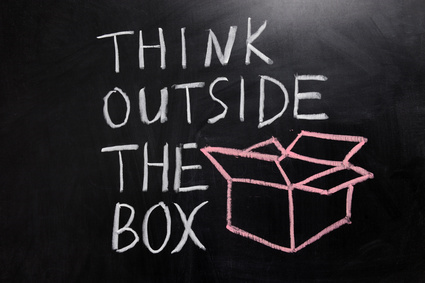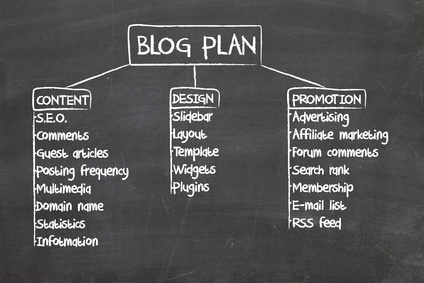In my last blog, 'What is decoupling in marketing and advertising?' I dealt with the history and context of decoupling in marketing and advertising. I now want to focus on some of the benefits.
Danielle Stagg
Recent Posts
Decoupling in marketing and advertising: The benefits
By Danielle Stagg on 1 May 2013
Writing a brief with FindGood
By Danielle Stagg on 25 April 2013
Writing a brief for potential marketing agencies doesn't have to be a drama.
While there are many tools, templates and tips available to help you when writing a brief on our website, we understand that starting with a blank white sheet of paper can be a bit daunting.
Advertising and comms agency selection: pros and cons
By Danielle Stagg on 23 April 2013
Are you selecting an agency? Many regional corporates (large and small) choose large advertising network agencies, but are they the best choice?
Branding and identity: the curse of 'New-ness'
By Danielle Stagg on 19 April 2013
How do you keep up with branding trends, stay new and stand out? 'New' may not be the answer for your developing brand strategy, argues Max Wright, Strategy Director at Kindred.
When it comes to brand identity development and creating a brand strategy, the concept of 'Newism' is hard to ignore. I suspect that this thrill of the new is driven by seeking standout at all costs or the ego-centric view that our audiences are just as obsessed with the new as we are.
Effective content marketing strategy: Do's and Don'ts (Part 2)
By Danielle Stagg on 17 April 2013
You can read part one of this series here.
Effective content marketing strategy: Do's and Don'ts (Part 1)
By Danielle Stagg on 11 April 2013
Content marketing is the creation and publication of interesting content (such as blog articles, comment pieces or multimedia shares) with the objective of driving traffic to your site and promoting your brand. Having a good content marketing strategy is essential for anyone looking to keep up with their competitors, foster consumer relationships and get the attention of potential consumers.
Key types of marketing content:
- Viral: Content that is designed to spread and be shared across social platforms. This content marketing strategy has a short lifespan and is predominately designed as a quick-fix, that is, to entertain, provoke (often emotional) reactions and to provide the 'wow' factor. It's great for growth and getting your name out there but doesn't offer the reader much in terms of substance. Examples of viral content marketing include infographics, videos, stats and picture galleries.
- Lead gen: Marketing content that aims to point out a problem or gap in the reader's knowledge and to then provide a solution (solved by opting in or signing up). This is a popular content marketing strategy encompassing all aspects of marketing, PR and brand journalism. It is designed to spark some kind of call to action.
- Sales gen: As above but with the objective of triggering a sale rather than a sign up.
- Discussion: As you would expect, this type of content is designed to create conversation and promote interaction between not only the reader and publisher but the readers themselves. This kind of community-focused thought-leadership is best characterised by comment or reaction pieces, industry overviews, insider/insight articles or instructional pieces, for example Do's and Don'ts (just like this!).
So, with that out the way, here are our very own Do's and Don'ts, to help you develop your content marketing strategy.
DO: Offer the reader something
Viral content marketing aside, each piece of content should help the reader in some way. This could be through educating, advising, entertaining or offering some kind of solution. Yes, at the end of the day Content Marketing is just that, marketing, but it should ultimately lead the reader to some kind of goal rather than just be self-serving. It should aim to encourage contribution and engagement while positioning your brand as a go-to thought leader or expert.
DON'T: Regurgitate old content
In the real world recycling may be great, but online there's nothing worse. Your content marketing strategy should be inventive and reactionary, incorporating developments in the industry, the latest viral trends and consistently offer your readers something new, fresh and engaging.
DO: Make it search-friendly
All marketing content strategies should be SEO (or Search Engine Optimisation)-friendly. That means when generating your content you need to take into account what your audience is looking for and what is likely to draw attention. With Google's updated algorthyms now kicking in it can be hard to stay ahead of the system, but SEO Moz is a great place to start. Also make sure you are monitoring your social footprint and the traffic your content generates. This way you'll know what is working and what isn't, as well as identifying room for growth.
Video Marketing campaigns: brands that got it right
By Danielle Stagg on 9 April 2013
Video marketing, be it viral or social is a great way bolster brand leverage, flex your online muscle and boost consumer engagement.
As consumer attention is increasingly drawn online, video marketing is becoming the norm for marketing departments looking to differentiate their brand from their competitors- with some thinking more outside the box than others.
Here, we've compiled a list of some of our favourite and most effective video marketing campaigns, including offerings from the likes of Coke, T-Mobile and Red Bull.
Video marketing campaign #1: KLM and Personal Space
Video is a great tool that allows brands to visually demonstrate a USP or concept whilst simultaneously promoting an ethos. KLM have identified their target audience and found an enjoyable way to communicate their message. It's also cringe-worthingly fun to watch.
Video marketing campaign #2: VW target San Paolo with SM
Here VW have proved that video marketing can be used for more than just comms but as a demonstration of social media strategy too. Often video is the glue that ties many channels together- this is a clear example of this 'coming together' of digital media.
Video marketing campaign #3: The Coca-Cola Happiness Truck
This is as much an example of experiential marketing as it is video marketing, but along with their Coke Friendship Machine, Coca-Cola are consistent in their use of video to propagate the 'brand experience'. Their video content is designed to evoke emotion, thus keeping consumers loyal via experiences that are memorable, encourage customer participation and offer personally relevant, credible and memorable encounters.
Video marketing campaign #4: Spanair & the Christmas Conveyer Belt
Another campaign designed to tug at the heart strings, this video marketing example shows how with a little innovation, brands can overcome the rigidity of their industry's image. While BA and AA opt for the concept of luxury or Easyjet for value, Spanair decided to travel the path less trodden: that of brand experience, with a 'behind the scenes' look at how they work to make their customers happy.
Video marketing campaign #5: Red Bull snowboarding
Any Red Bull campaign could make this list; their team has pioneered the use of video to create a brand identity (their Space Jump smashed viral records). Red Bull's content is always visually appealing, uniquely thrilling and has transcended the limits imposed by the product itself.
Video marketing campaign #6: T-Mobile Traffic Wardens
It's possible that when it comes to video marketing nobody does it better that T-Mobile. From their Liverpool Street Station Flashmob - 37m views and counting- to this, their lesser known but arguably better Traffic Warden campaign, the T-Mobile team have become experts in tying interesting, enjoyable and most importantly shareable ideas to their business model.
What is decoupling in advertising and marketing?
By Danielle Stagg on 3 April 2013
Many marketers are tasked with doing more with static or shrinking budgets. The answer to this, is often ‘ to decouple’ production.
Despite the potential benefits, many marketers only have a limited understanding of what decoupling in advertising and marketing actually is, how to decouple and who it is suitable for.
This post, from Gutenberg CEO Simon Steel, the first in a series, looks at the history of decoupling in advertising and marketing and provides a clear explanation of what decoupling is.
The history of decoupling and advertising and marketing
The full service advertising agency had a privileged relationship with advertisers. They often acted as consultant, procurement department, media buying agency, promotional and direct marketing agency rolled into one. Production was craft and many specialists were employed to realise the creative idea, such as specialist typesetters. Production was expensive, time consuming and arms-length from the advertiser. Suppliers such as printers and re-pro houses were managed by the agency and prices marked up.
Gradually this model split and fragmented. Media buying went into specialists, as did direct marketing, promotional marketing and web, all splintering again into the fragmented market we see today, leaving creative agencies with the creative idea and the execution and production of that creative idea. At the same time technology made the execution, delivery and production of campaign material easier and clients, led by specialist procurers started to look at their agency invoices and wonder if things couldn’t be done a bit more efficiently.
This set the scene for decoupling.
Single integrated or specialist agencies tend to make significant margin on the production of marketing material. They are often high overhead businesses, with large fixed operating costs. By decoupling the production of marketing assets and centralising the procurement of printed material, clients tend to save upward of 20% from their overall marketing budget.

Brand identity: Has your brand strategy got soul?
By Danielle Stagg on 3 April 2013
Consumers are seeking authentic brands. Brands with soul. Soul needs to be baked into your brand identity.
Gone are the days when marketing was about having the biggest, shoutiest brand, being 'revolutionary' or being the first to launch stuff into space.
To today’s hype-weary consumer, flash brand strategies, such as celebrity endorsements and high-budget campaigns are seen as the swan song of desperate 'me too' brands trying to eek out market share. They're often a clear sign that the products behind them are lacking in quality and most importantly, soul.
Brand awareness
A brand identity with soul thrives on popularity, admiration, trust and is confided in by their consumers. Brands rack up clout scores on how many of the public and stakeholders literally ‘like’ them.
It’s not news that social media has changed the lines of communication. The trick is to extend the brand personality in an intelligent and human way. After all, friends know when to stop talking shop. A friend would know what to post in your Facebook newsfeed to transport you into a more light-hearted and engaged frame of mind.
Ben and Jerry’s understood this during Occupy Wall Street when they set up live coverage on their website with the title ‘We Stand by the 99%’. They were listening to their audience and they weren’t afraid of openly empathising. Just like a thoughtful human. Just like a friend. They were 'with' us, not 'instructing' us. A vital shift in the relationship between sellers and buyers.
The modern brand identity
It’s all very well quoting text book case studies so here’s one closer to home for brand soul (or a shameless plug for one I launched myself).
In partnership with the BBC and property developer TCN we brought the Ugli Creative Campus in White City, West London to life- a thriving community for 650 creative folk and a brand based on wholesome honesty. Not only were we 12 months ahead of lease capacity, we have a still-growing waiting list.
What was the secret? Fundamentally, we just created a very open, honest and human brand. A brand with soul. A likeable brand identity that was based on what it did and how it acted, looking to support, help and incubate creative talent. Our philosophy, brand strategy and indeed our URL, is ‘lovely inside’, for it's about what all brands should be: People. Community. Engagement. Sharing. Honesty. Fun. Creativity.
As written by Nick Pearce, Co-Owner of JP Creative and Co-Founder of Ugli Creative Campus.
Big Data: On trend or old news?
By Danielle Stagg on 26 March 2013
Is it a leap forward helping the world to run smoothly on exabytes of unstructured, unprecedented levels of data? Or, asks Bill Portlock, Head of Marketing at Marketing Metrix, is Big Data a new buzz-word used by sales and marketing to frighten organisations into purchasing multimillion dollar IT platforms?
Big Data: history repeating itself?
History is certainly repeating itself. I’m old enough to remember the birth of CRM (customer relationship management) and how the industry was split between IT companies and their solve-it-all £multimillion databases, and the pointy heads claiming it was their domain. CRM turned out to be data driven marketing using IT as a tool, and eventually became the buzz-word of the '90s.
With this in mind, it’s vital that we monitor how the Big Data debate develops and monitor how it will impact on our industry. But there are some cautionary steps that must be taken. Some companies are rushing to buy expensive machines to capture what is in many cases vast amounts of ephemeral data without giving thought to how it will be of value to them in the long run. Others are burying their heads in the sand as they find Big Data to be too overwhelming and are still stuck with figuring out whether or not Social Media is worth it (it is!).
Big Data Analytics
One can throw enormous volumes of data into a mega machine costing a fortune and it will come out with all sorts of interesting figures, but are these details useful or (more importantly) even usable? Is a machine really better at understanding how human data can be used?
The most effective way to approach Big Data is to combine the entirety of a company’s data collateral, and then decide where to look within the Social Media plane. The data is not thrown into some black box, but analysed by humans using IT tools and software. It’s the creative interpretation of the data which will do most to drive the bottom line.
This is doable, scalable and most importantly actionable. But the most important question to ask an organisation, before embarking on any ‘Big Data’ project is what they want to get out of it! Essentially, despite the hype and fanatical strategies surrounding Big Data, it’s not difficult or confusing; it's just about asking the right questions.
What's your stance on the Big Data Debate? Were you sold the same story in the 90s? Let us know!











